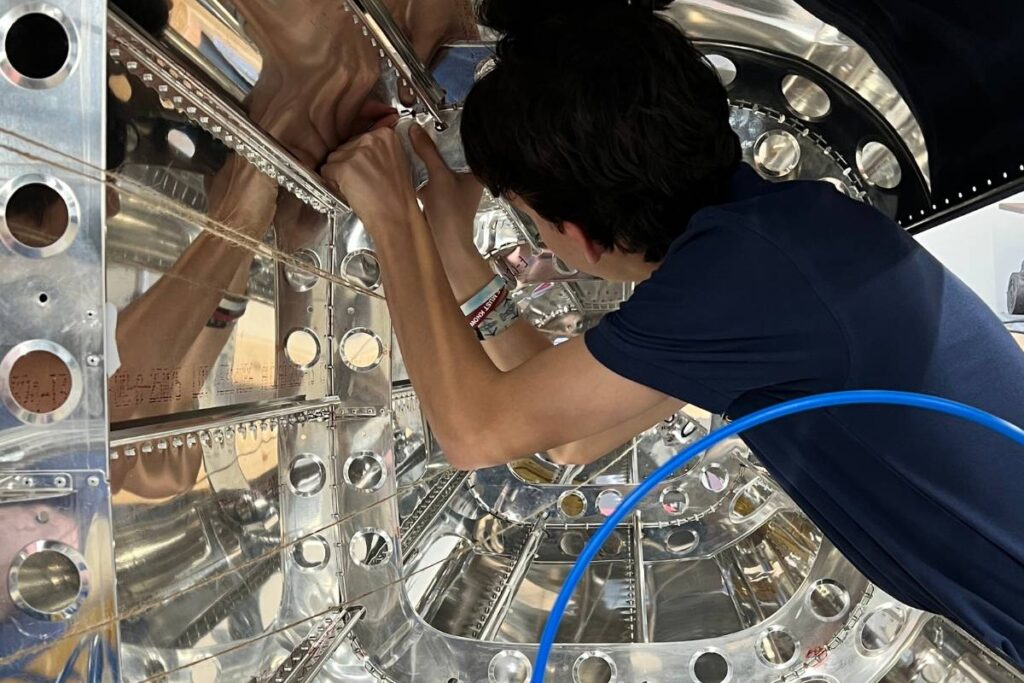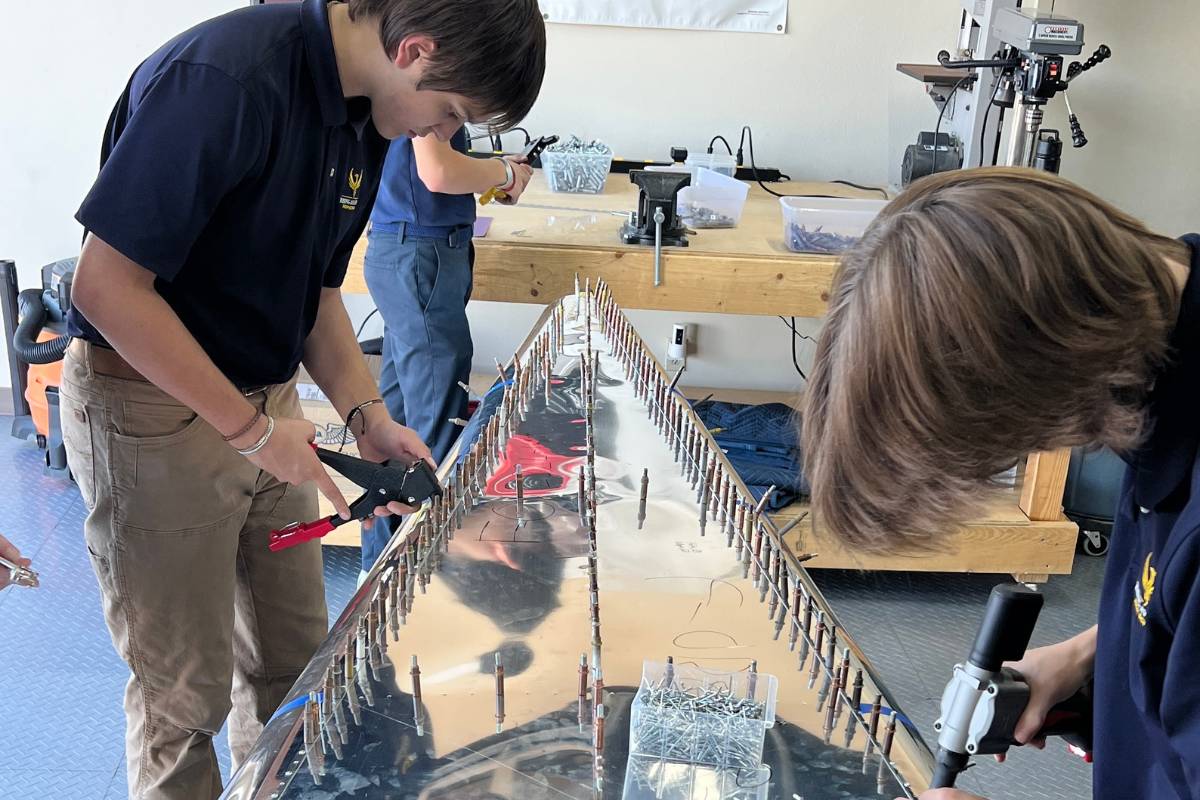Texas high school students and their families face a big decision between Career and Technical Education (CTE) programs and traditional academic pathways. And CTE programs make up a good portion of the state’s education system.
Researchers have found that CTE students develop stronger problem-solving, communication, and critical thinking skills during high school compared to their traditional counterparts.
The debate over which path leads to better career outcomes isn’t straightforward. Traditional high schools focus on college prep through core academic subjects.
CTE programs mix academics with hands-on training in specific career fields. Six out of ten CTE students plan to pursue careers related to their high school program area, so it seems these programs offer a clear path from classroom to career.
Understanding CTE and Traditional High Schools in Texas
Texas high schools offer two main paths: Career and Technical Education (CTE) programs that blend academic learning with hands-on training, and traditional college prep models that stick mostly to core academic subjects. CTE programs serve many high school students, but traditional education is still the standard academic track.

Major Differences Between CTE and Traditional Models
There are several key differences between these two education pathways.
Course Structure and Focus
Traditional high schools emphasize core subjects like math, science, English, and history. Your classes follow a set curriculum built for university admission.
CTE programs go in a different direction. You still take academic classes, but they’re mixed with technical training in career fields.
CTE is offered through comprehensive high schools, magnet schools, and career academies that combine classroom learning with real-world projects.
Career Preparation Methods
In traditional schools, career preparation happens mostly through career centers and general academics. You pick up broad skills that could fit a lot of jobs.
CTE coursework gives you direct job training. Texas offers CTE programs in 16 career clusters like Health Science, IT, Manufacturing, and Agriculture. You can even earn industry certifications before you graduate.
Learning Environment
Traditional classrooms rely on lectures, textbooks, and theory. You learn mostly by reading, writing, and taking tests.
Technical education uses labs, workshops, and hands-on projects. You work with real industry equipment and learn by doing tasks that match real jobs.
Key Curriculum Features and Student Experiences
CTE programs emphasize hands-on training and specialized skills through direct workplace experiences. Traditional high schools focus on core academic subjects and college prep, mostly through classroom-based learning.

Hands-On Learning in CTE Programs
Like was said above, CTE programs revolve around practical, real-world experiences that get you ready for specific careers. You use industry-standard equipment and tools from actual workplaces.
Many CTE courses have lab components where you practice things like welding, coding, or medical procedures. Sometimes you’ll split your day between traditional classes and specialized workshops.
At Rising Aviation our students may be learning to fly in a Piper Archer, working in the lab building an airplane, or practicing their drone skills while in the classroom.
You can earn professional certifications while you’re still in high school. Automotive repair, nursing assistant, and computer programming are all popular options.
Our students are able to choose between earning their private pilot certificate, drone pilot certificate, or prepare for their aircraft mechanic training.
Academic Focus in Traditional High Schools
Traditional high schools focus on theory and critical thinking. You’ll learn through lectures, textbooks, and writing assignments more than hands-on activities.These are obviously important skills but don’t always prepare someone for the workforce.
Most of your time is spent in the classroom with limited real-world application. Science labs give you a little hands-on experience, but not much that’s job-specific.
You’ll prep for standardized tests like the SAT and ACT. The curriculum lines up with college admission standards and general education needs.
Advanced Placement courses let you earn college credit. These classes dive deeper into academic subjects but don’t teach job-specific skills.
Comparing Career Outcomes for Graduates
When you’re deciding between CTE and traditional high school paths, career outcomes can make a huge difference. Research keeps showing clear patterns in how graduates from each program do after high school.
Salary and Employment Benefits
CTE graduates usually hit the workforce with higher starting salaries than traditional high school grads. Those technical skills from CTE programs really give you a leg up in certain job markets.
Studies tracking high school student outcomes in multiple states found that CTE students land jobs more quickly right after graduation.
Skills That Matter to Employers
With CTE, you pick up hands-on experience that employers want right away. Traditional graduates often need extra training before they’re ready for the workplace.
Career and technical education programs give students academic and technical skills for in-demand jobs. It’s a pretty direct path to employment.
Of course this also depends on what career students actually go into. While many CTE programs, like ours, can get students the certificates they need to start working, many careers require some vocational training and certification before you can jump into the workforce.

Long-term Career Growth
Your career path depends on a bunch of factors beyond just your high school choice. CTE grads often move up quickly in technical fields, but they might run into limits without more education down the road.
Traditional graduates usually have more flexibility if they want to switch careers. Still, research points to different outcomes between CTE program types.
Graduation Rates
When you compare students with similar backgrounds, both programs show about the same graduation rates. Honestly, your success hinges more on the quality of the program than the type you pick.
College Readiness and Continuing Education Opportunities
Both CTE and traditional high school programs can get you ready for college, but they take different routes. Research suggests that students who take both CTE and college prep courses end up more ready for college and careers than those who just stick with college prep.
CTE College Preparation:
- Dual credit programs let you earn college credits
- Technical skills transfer over to college programs
- Industry certifications can boost your college applications
Traditional High School Benefits:
- Solid foundation in core academic subjects
- Advanced Placement courses for college credit
- College counseling and prep support
- Straightforward path to four-year universities
Many Texas CTE courses now include academic content that meets college requirements. Through dual enrollment programs, you can even earn your associate degree before you finish high school.






